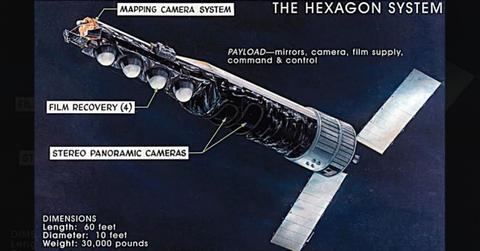Cosmic Comeback: How Scientists Lost Track of Satellite for 25 Years in Celestial Bermuda Triangle

The satellite S73-7 turned up recently after going missing for 25 years.
In a case of cosmic missing keys, scientists misplaced a satellite known as S73-7 for over two decades.
Missing since the 1990s, the satellite mysteriously resurfaced recently, prompting questions about how the Department of Defense managed to lose track of an interstellar probe in the first place.
Announcing its cosmic comeback, Jonathan McDowell, an astrophysicist from the Harvard-Smithsonian Center for Astrophysics, revealed the rediscovery of the S73-7 satellite after 25 years of being off the radar.
The 18th Space Defense Squadron played a crucial role in locating the wayward spacecraft, marking the end of a space saga that began when the Infra-Red Calibration Balloon (S73-7) was launched on April 10, 1974, as part of the United States Air Force’s Space Test Program, as reported by Gizmodo.
Initially deployed to orbit by a larger satellite, called KH-9 Hexagon, S73-7 was tasked with inflating and calibrating remote sensing equipment to ensure accurate readings from outer space instruments.
However, it vanished from the grid in the 1990s, marking its second disappearance after initially going missing in the 1970s.
- What Lies Beneath: NASA Scientist Believes Aliens May Have Found 'Perfect' Hiding Spot in Earth's Oceans
- Global Threat: Russia Insider Warns West of 'World War Using Nuclear Weapons' Amid Escalating Support for Ukraine
- Countdown to Disaster? Ex-NATO Official Warns Russia, Iran and China Could Wage WWIII in Just Years
McDowell speculated that deployment mishaps and limited radar coverage might have contributed to S73-7 dropping off the radar like a celestial Bermuda Triangle.
He suggested that what was being tracked might have been a dispenser or a piece of the balloon that didn’t deploy correctly, making it difficult to detect on radar.
Never miss a story — sign up for the Front Page Detectives newsletter. Be on the scene the moment news breaks.
While satellite tracking systems aim to maintain an airtight monitoring network, keeping tabs on over 20,000 objects tracked by the Department of Defense’s global Space Surveillance Network presents challenges, especially when many of these objects don’t transmit their identities.
The task becomes even more daunting when dealing with crowded regions of space and objects orbiting directly above the equator, where radar monitoring is limited.
Despite these challenges, recent breakthroughs in tracking interstellar objects, such as the use of algorithms like Tracklet-less Heliocentric Orbit Recovery (THOR), offer hope for better monitoring and understanding of space debris and celestial bodies.
Become a Front Page Detective
Sign up to receive breaking
Front Page Detectives
news and exclusive investigations.
